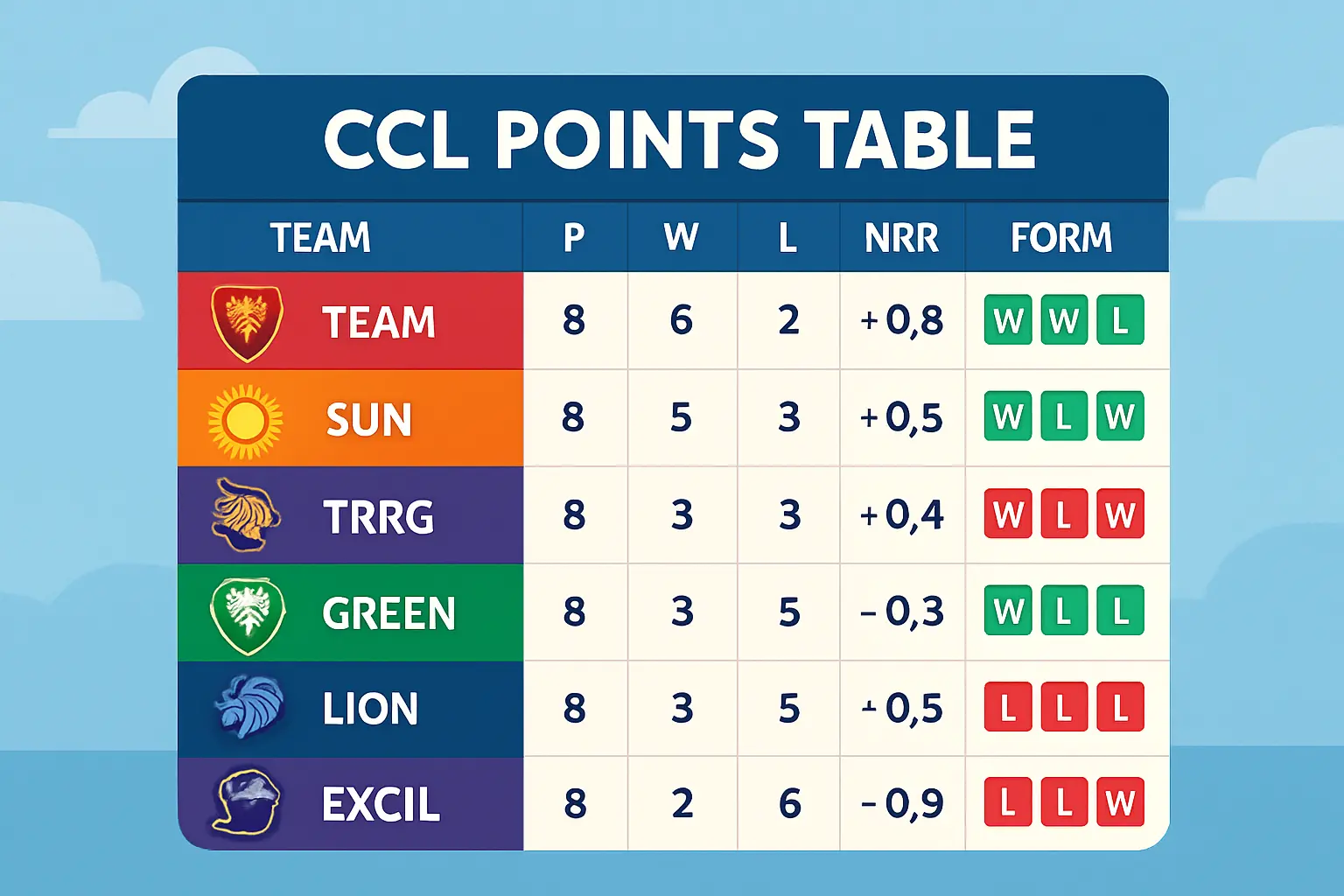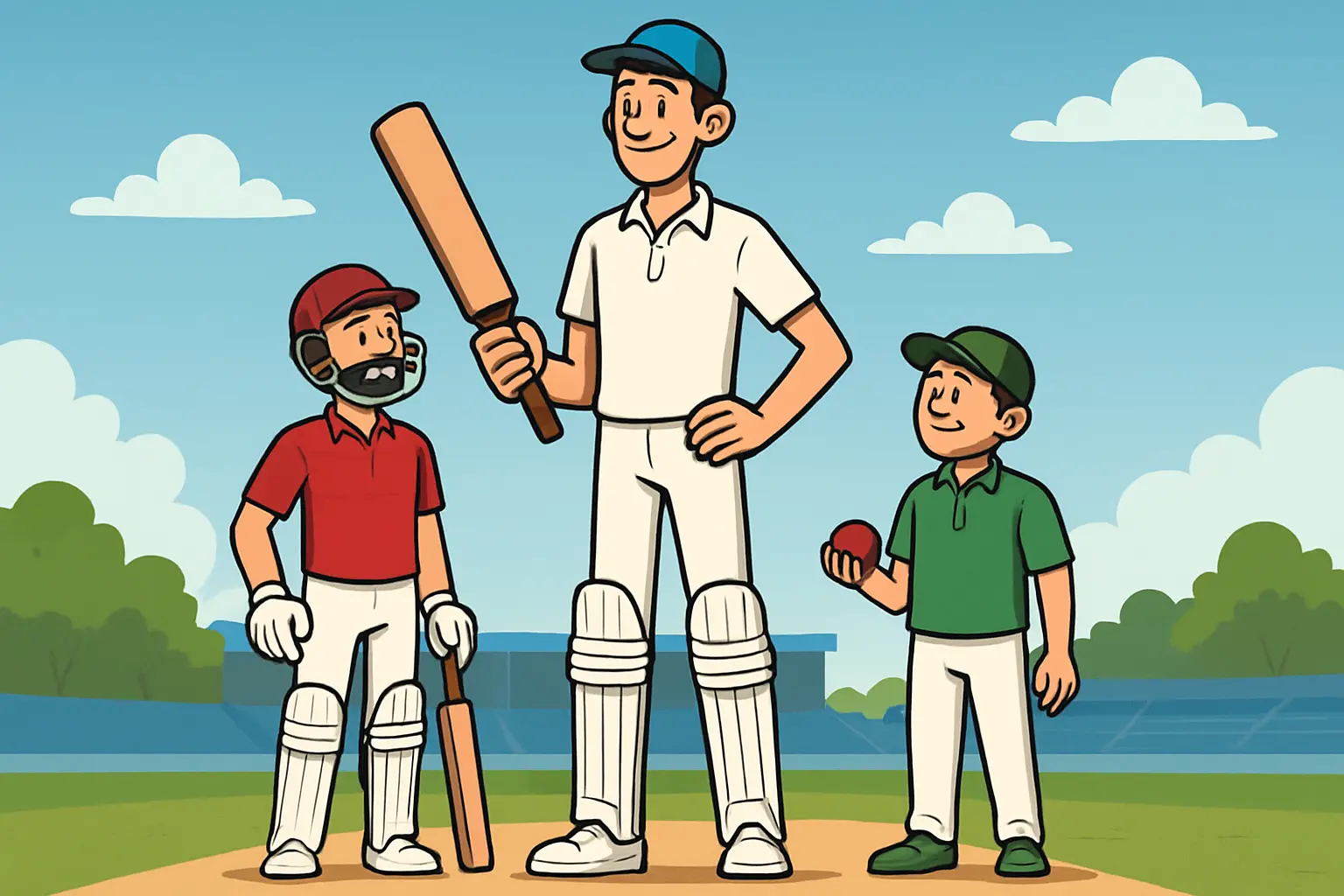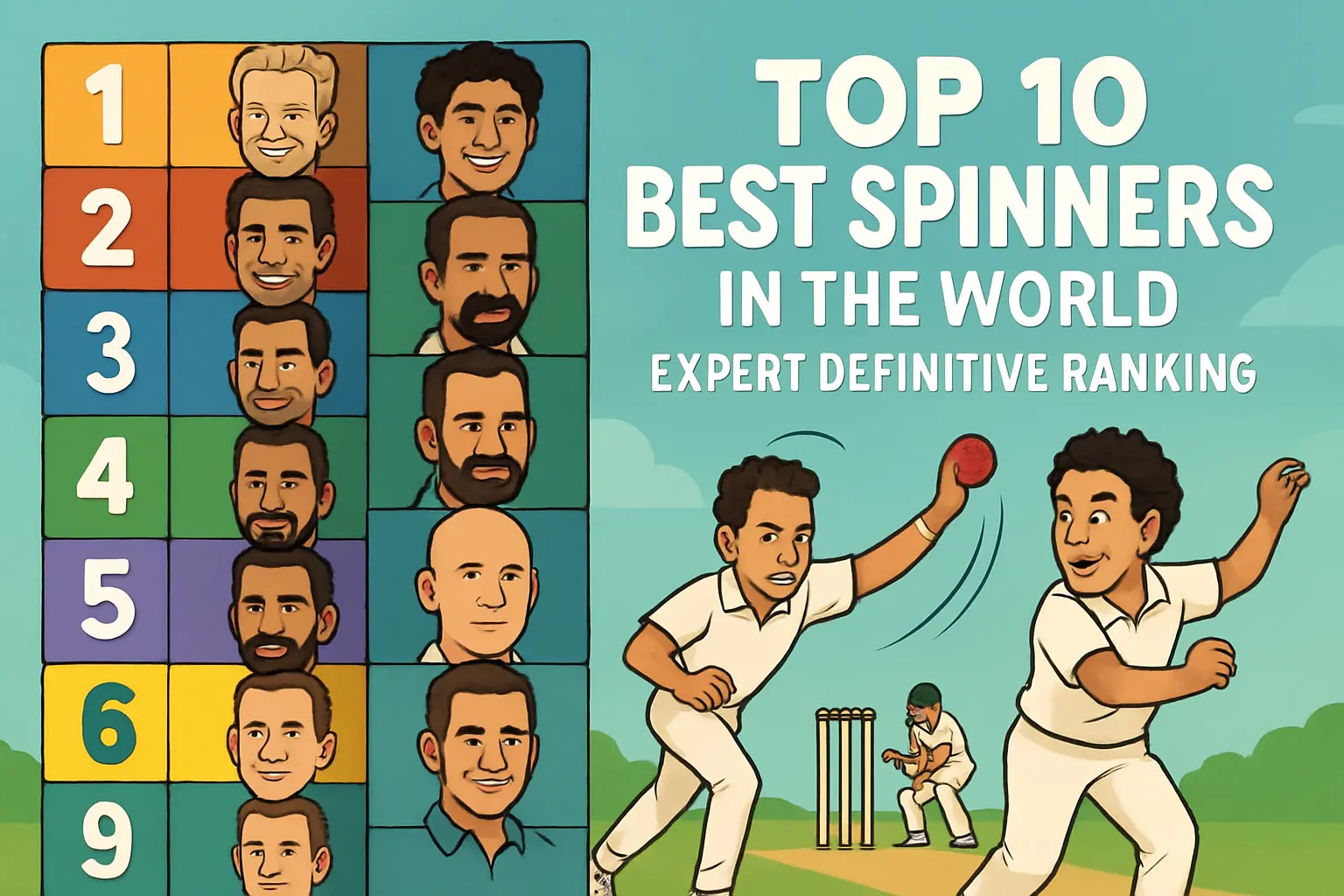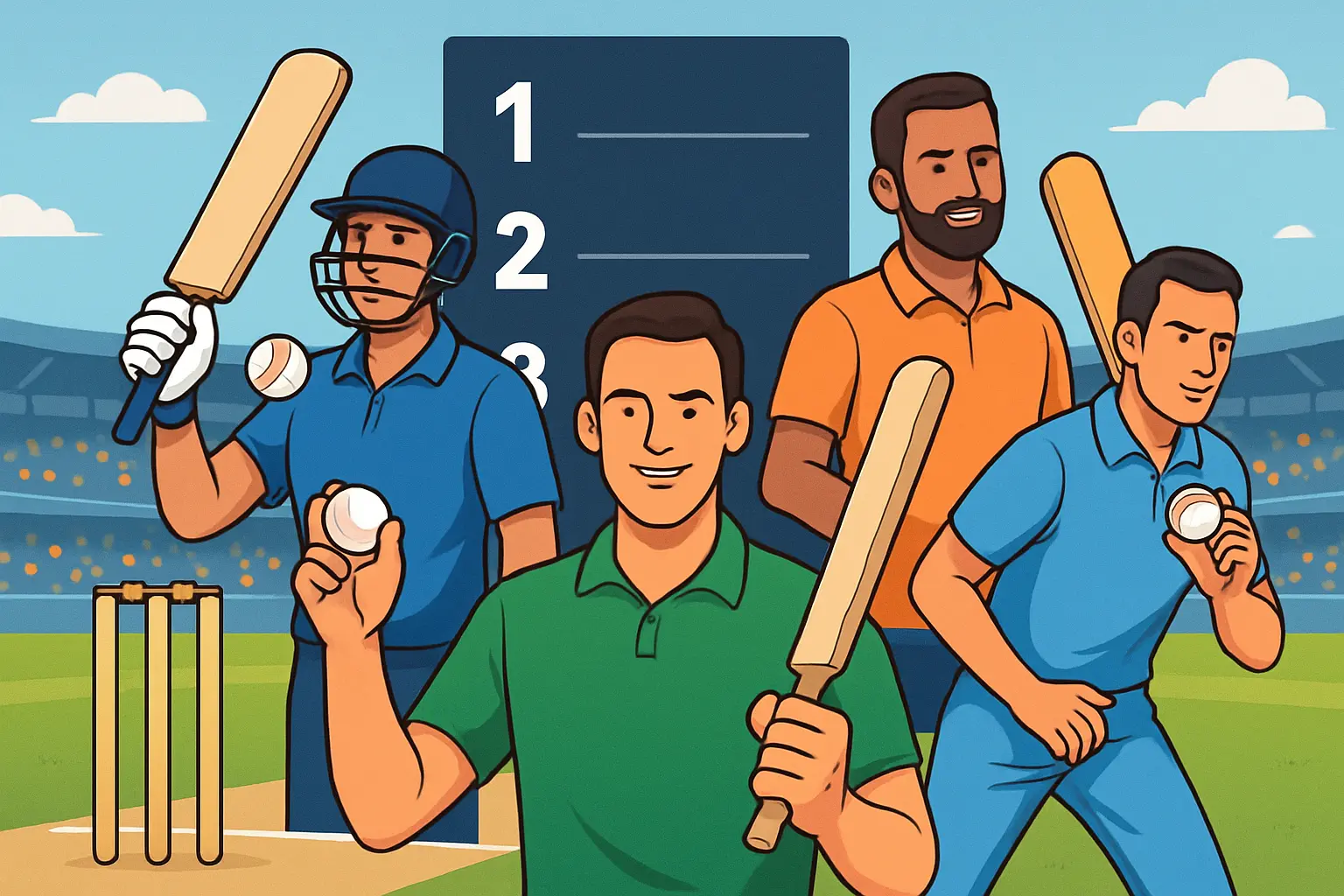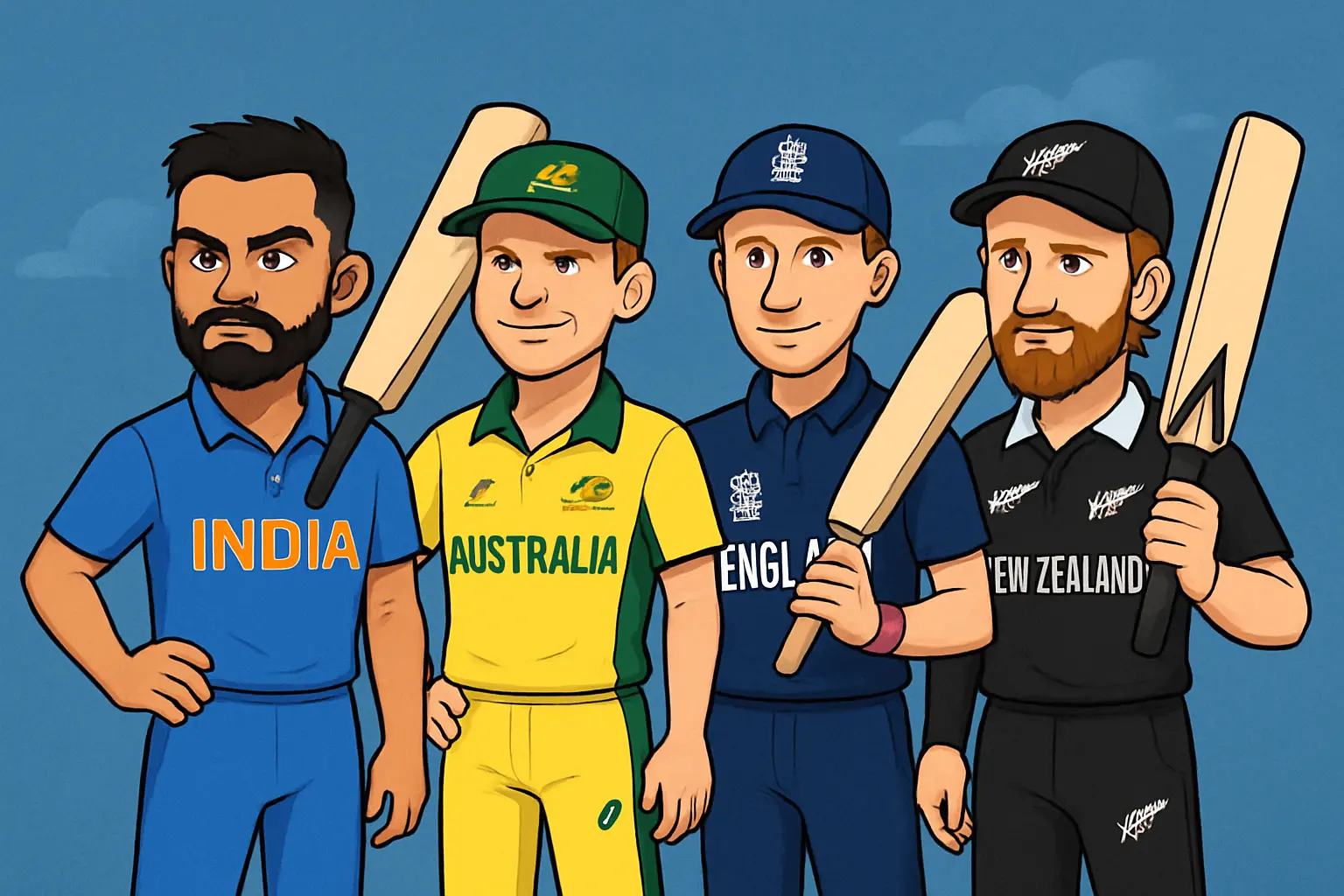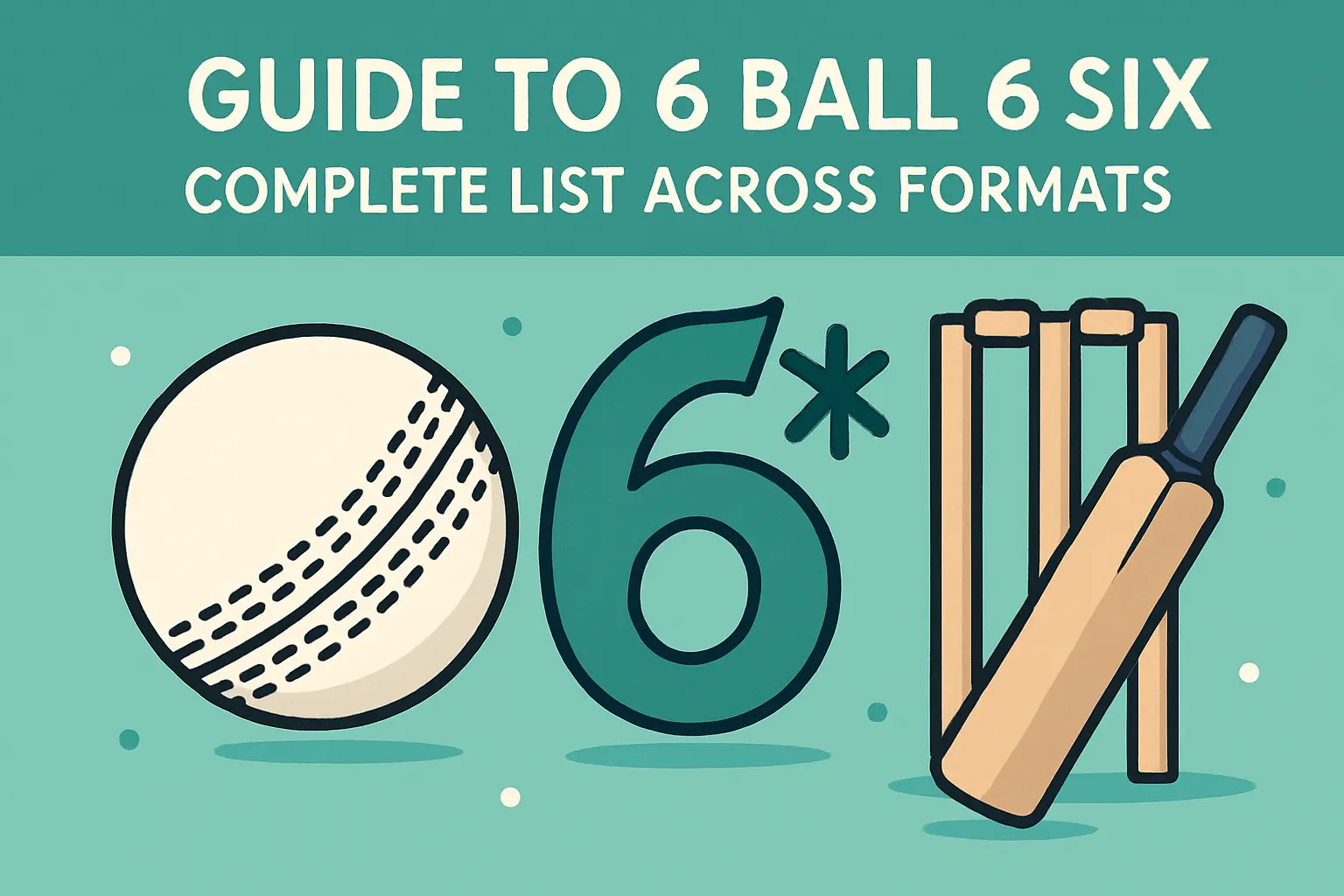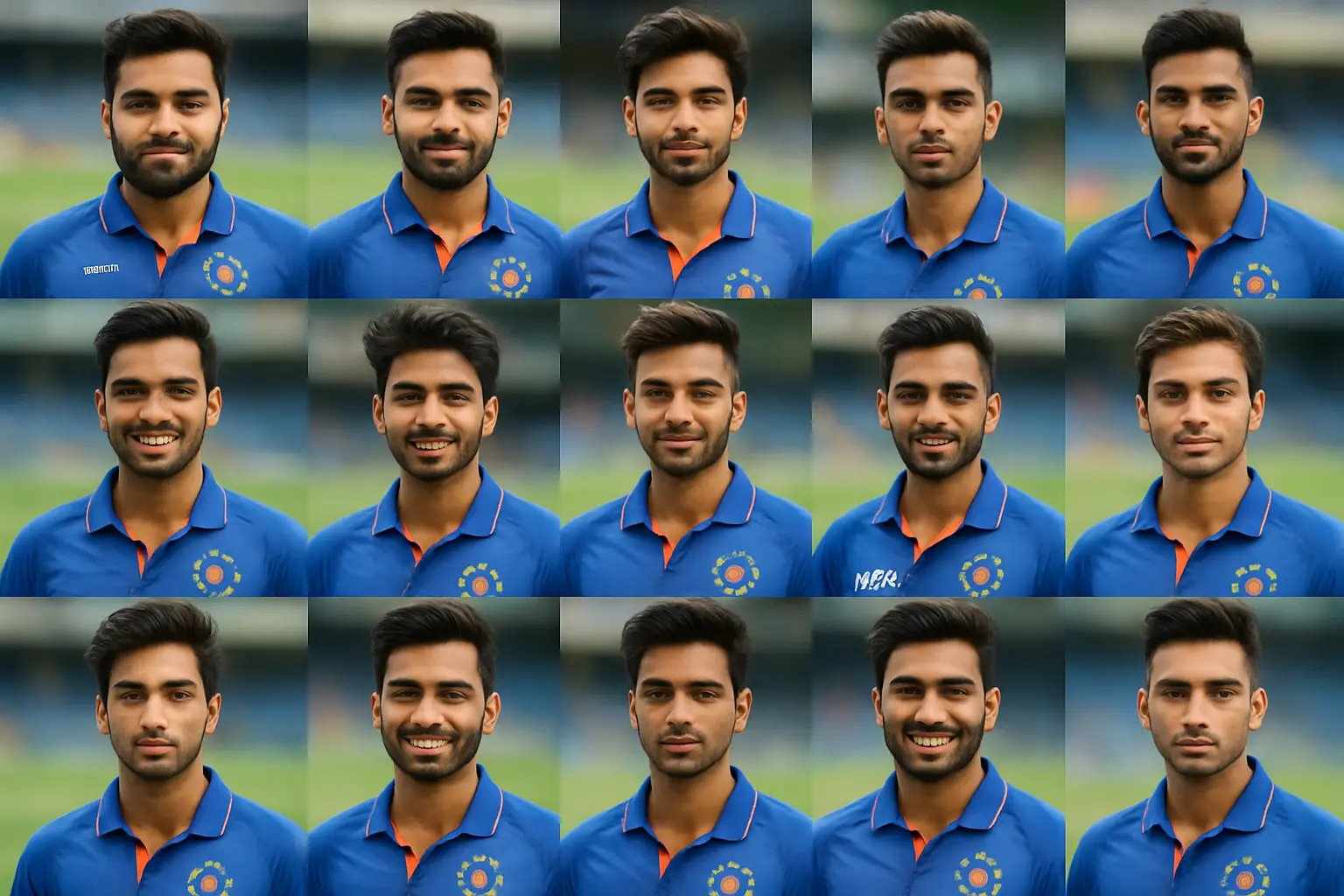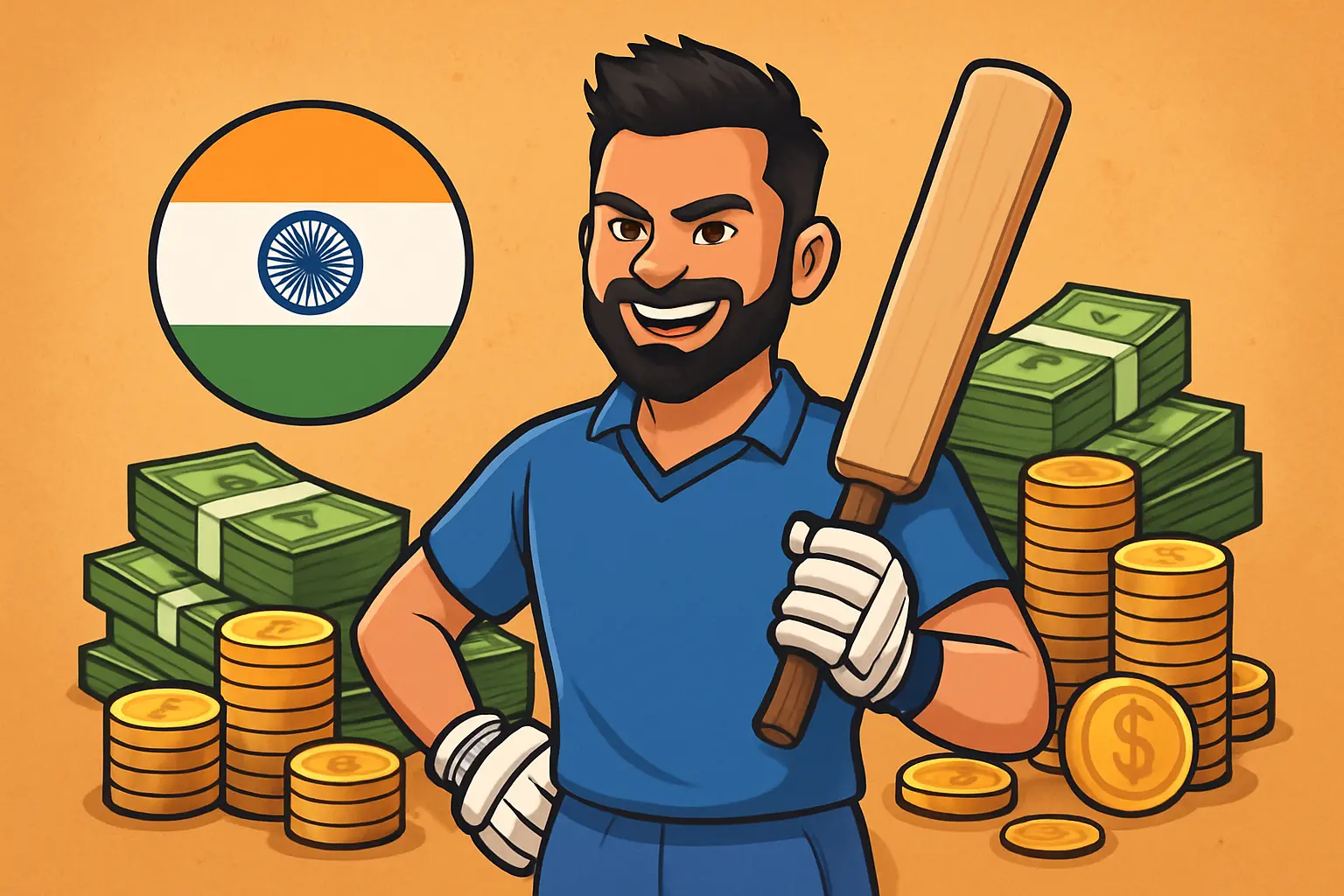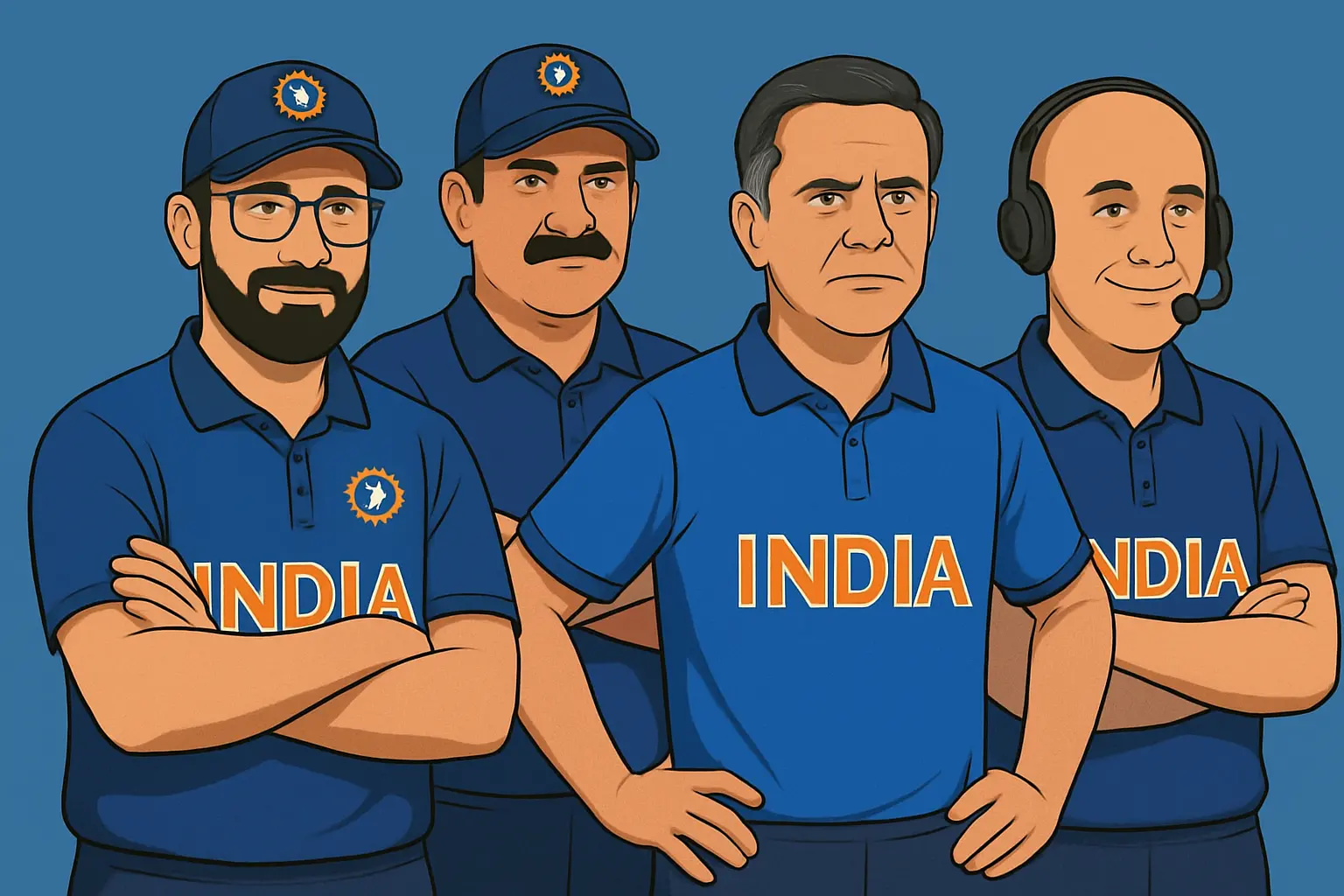The money in modern cricket doesn’t just live in the glint of a trophy or the roar of a packed evening crowd. It’s stitched into media rights packages that dwarf national sports budgets, locked into salary caps that shape selection rooms, and reflected in franchise valuations that would make a venture capitalist blink twice. The richest cricket leagues aren’t merely sports competitions; they’re broadcast engines, sponsorship magnets, and talent marketplaces. To understand which is the richest cricket league in the world—and how the top richest cricket leagues stack up—you need more than a list. You need the economics behind the shine.
This is a definitive, evergreen hub that ranks the richest T20 leagues by money that actually moves: media rights value (especially per match), salary caps and average player pay, prize money, sponsorship, attendance and viewership, and franchise valuation dynamics. It’s built to be a reliable reference for analysts and fans alike, with methodology explained and league-by-league context that reflects how these tournaments really operate.
Methodology: What “richest” means in cricket
“Richest” gets misused. It can’t be just prize money, or a one-off broadcast line. A league’s economic power is multi-channel and recurring. Here’s the framework used to rank the richest cricket leagues:
- Media rights value (domestic + international): The anchor metric for any league’s economics. Weight placed on per-match media rights as a clean, comparable measure, plus total cycle value as a proxy for long-term deal strength.
- Salary cap and average top-player salaries: What teams are allowed to spend—and what they actually pay. This reveals the real labor market. Auction vs draft dynamics are considered, as is any icon or marquee category.
- Prize money: Winners’ purse and total pool. It’s not the largest line item, but it signals health and sponsor appetite.
- Sponsorship revenue and title rights: Title sponsor fees, kit partners, central sponsorship load. Publicly available numbers and market estimates inform this.
- Franchise valuation and investment trends: Independent teams vs board-owned brands; private equity involvement; multi-club networks (e.g., IPL owners backing SA20 teams).
- Attendance and viewership: Stadium revenue matters, but so does the habit-forming power of broadcast reach. Both affect the next rights cycle.
- Currency and accounting notes: Figures are rounded for clarity and converted where needed; exact splits vary by cycle. Ranges are used when rights disclosures are partial.
Ranking snapshot: Richest cricket leagues (composite score)
This ranked list blends media rights per match, salary cap, prize money, sponsor heft, and franchise valuations. It’s designed to capture present economic power, not just legacy status.
- Indian Premier League (IPL) — richest cricket league in the world by a gulf; benchmark for per-match media rights, team valuations, and global sponsorship gravity.
- Pakistan Super League (PSL) — broadcast and sponsorship powerhouse in its market, strong per-night ratings, consistent sponsor demand, and disciplined costs.
- Big Bash League (BBL) — high volume of games, large domestic footprint, solid commercial base and attendance, renewed push on player pay.
- SA20 — privately-fueled growth with IPL-linked ownership, respectable rights, good crowds, and a strong prize pool relative to market size.
- International League T20 (ILT20) — among the highest average player salaries after the IPL; rights and sponsorship buoyed by regional media economics.
- The Hundred — centralised ECB structure; broadcast carriage and marketing scale give it serious commercial weight even with capped salaries.
- Women’s Premier League (WPL) — richest women’s cricket league by far; strong media rights per match and steady sponsor interest; rising salary cap.
- Caribbean Premier League (CPL) — international brand recognition, tourism-aligned sponsorship, steady pay scales; stable, midsize commercial profile.
- Major League Cricket (MLC) — early-stage venture with heavyweight backers; salaries and team investments expanding; media and gate revenue climbing.
- Bangladesh Premier League (BPL) — established brand, large fan base, more modest sponsor and media numbers relative to other top leagues.
- Lanka Premier League (LPL) — improving execution and talent pipeline; salaries and rights trending upward but still lean.
- Abu Dhabi T10 — short format, dense sponsor inventory; big per-day salaries for stars but a tiny season footprint keeps overall revenue lower.
A one-line answer to the common query: The IPL is the richest cricket league in the world by media rights per match, total rights value, franchise valuations, and the highest salary ceiling; the WPL is the richest women’s cricket league.
Comparison table: key money metrics across leagues
Note: Ranges are used where contracts are composite, non-public, or currency-linked. “Per-match rights” is a critical comparative measure where known.
| League | Media rights (per match) | Team salary cap (approx) | Top player salary (approx) | Prize money (winners) | Snapshot |
|---|---|---|---|---|---|
| IPL | ~USD 15m | INR 90–100 crore | >INR 20 crore | High, multi-crore | Global benchmark; highest paying cricket league |
| PSL | Low six figures USD (est) | ~USD 1.3–1.5m | ~USD 170k–240k | PKR 120m+ | Strong ratings; efficient cost base |
| BBL | Mid six figures USD (est) | ~AUD 2–3m | ~AUD 420k+ | Significant but moderate | Big domestic footprint |
| SA20 | Mid six figures USD (est) | ~USD 2m | ~USD 300k | R tens of millions total pool | IPL-owner backing; strong crowds |
| ILT20 | Mid-to-high six figures USD (est) | ~USD 2.5m | Up to ~USD 450k | Strong | Deep-pocketed backers; high pay |
| The Hundred | Mid six figures USD (est) | ~GBP 1m (men), lower (women) | ~GBP 150k (men) | Modest | Centralised model; wide broadcast reach |
| WPL | ~USD 800k–900k | ~INR low teens crore | ~INR 3+ crore | Crore-level | Richest women’s league |
| CPL | Low-to-mid six figures USD (est) | ~USD 0.7–1.0m | ~USD 160k | Moderate | Tourism + diaspora viewership |
| MLC | Low six figures USD (est) | ~USD 1.5–2.5m | ~USD 175k–300k | Moderate | Growth league with serious investors |
| BPL | Low six figures USD (est) | ~USD ~1m | ~USD 80k–150k | Moderate | Passionate market; cost-sensitive |
| LPL | Low six figures USD (est) | ~USD ~1m | ~USD 60k–100k | Modest | Building phase |
| Abu Dhabi T10 | N/A (short event) | ~USD ~1–1.2m | ~USD 150k–200k | Modest | Compressed season, high per-day pay |
League-by-league deep dive
Indian Premier League (IPL): The global benchmark
Economics in one glance:
- Media rights value: unmatched, with per-match rights around the mid-eight figures in USD.
- Salary cap: the highest in cricket by a distance, with top player salaries surpassing INR 20 crore and squad budgets in the INR 90–100 crore band.
- Prize money: multi-crore winner’s purse; marketing amplification from sponsors and partners.
- Sponsorship: elite title sponsorships, premium associate partners, massive digital ecosystem.
- Franchise valuations: billion-dollar clubs in multiple markets; strong secondary revenue streams (merchandising, local sponsorship, academies).
Why the IPL sits alone
- Per-match media rights: This is the cleanest measure of “richest.” The IPL earns more for one game than many leagues earn across an entire week of play. Digital streaming rights have created a second pillar that rivals, and at times outpaces, traditional TV.
- Audience density: The league concentrates premium broadcast windows with appointment viewing. Market size matters; India’s advertising economy underwrites high CPMs.
- Labor market standard-setter: Auctions encourage price discovery. The result: top cricketers in their prime routinely surpass most national central contracts in a single season.
- Franchise sophistication: Mature front offices, strong data teams, and long-term brand-building have created self-sustaining ecosystems. The league is the anchor tenant for global T20 calendar planning and sponsorship cycles.
Tactical note from the locker room: The timing of the auction drives retention gambits. Teams will sometimes overpay to avoid a bidding war in a thin skill market (death bowling, left-arm pace, powerplay spin), knowing the marketing return on a star often subsidizes the sporting overpay.
Pakistan Super League (PSL): TV magnet, efficient economics
Economics in one glance:
- Media rights: strong domestic ratings that convert into reliable rights renewals; per-match figures in the low six figures in USD, with international syndication layered on top.
- Salaries: category-based with tight bands; team purse usually around the USD 1.3–1.5m mark.
- Prize money: winners north of PKR 120m; significant by local standards.
- Sponsorship: robust local sponsor base; solid title sponsorship history.
- Gate and vibe: full houses for marquee fixtures; strong city allegiance.
Why PSL ranks high
The PSL combines a cost-disciplined salary structure with consistent media and sponsor demand. It’s arguably the most efficient league per dollar of spend: high-quality cricket, lean overheads, and passionate audiences. Player acquisition strategy is often smarter than louder leagues; teams build around resourceful bowling and adaptable batters rather than only marquee fireworks.
BBL: Big footprint, evolving pay strategy
Economics in one glance:
- Media rights: part of a national rights package with significant value; BBL’s per-match estimate sits in mid six figures in USD.
- Salaries: top brackets have been lifted to keep pace with global T20 competition; Australian domestic players can earn strong returns with marketing tie-ins.
- Prize money: meaningful but not the primary lever.
- Sponsorship and attendance: strong family-market positioning; holiday window crowds are a feature of the brand.
Why BBL stays among the richest
It’s a volume play with trusted scheduling, integrated with a national cricket calendar. The league has leaned into entertainment and community—families in club colors, lightning-quick turnarounds, and a polished matchday product. The recent strategy shift to increase marquee pay and attract more overseas stars acknowledges the global market pressure from ILT20, SA20, and others.
SA20: IPL network muscle, local flair
Economics in one glance:
- Media rights: anchored by a strong domestic broadcaster with solid international partners.
- Salaries: team purses around USD 2m with auctions enabling competitive bidding.
- Prize money: big by regional benchmarks; total pool around tens of millions of rand.
- Ownership and valuation: backed by IPL franchises, creating multi-club synergies and shared analytics.
Why SA20 is climbing fast
The league is backed by serious cricket operators who understand how to scale a brand. The SA20 has carved out an identity with sunny venues, vocal crowds, and aggressive player spend relative to market size. It benefits from an accessible time zone for European and Asian viewers, and the cross-pollination between IPL franchises (scouting, analytics, support staff) reduces execution risk.
ILT20: High player pay, Gulf-scale ambition
Economics in one glance:
- Media rights and sponsorship: underwritten by well-capitalized ownership and regional networks; strong brand partnerships.
- Salaries: among the highest outside the IPL; team purse around USD 2.5m; top players touching USD 450k.
- Prize money: healthy, with appearance fees and bonuses stacking well for top names.
Why ILT20 matters economically
ILT20 shifted the market for non-IPL pay scales. The league proved that short-window tournaments in attractive travel hubs can lure big names with condensed, well-paid stints. That upward pressure has forced rival leagues to rethink salary caps, especially for overseas stars and short-term replacement deals. As a commercial package, it’s built around premium hospitality, sponsor hosting, and a global audience of traveling fans and diaspora.
The Hundred: Centralized scale, brand-first model
Economics in one glance:
- Media rights: major free-to-air and pay-TV carriage drives visibility; per-match value in mid six figures USD.
- Salaries: tightly capped with clear, published bands; top men’s bracket around GBP 150k; women’s salaries rising steadily.
- Sponsorship: strong inventory and centralized sales power; consistent brand-first positioning.
- Prize money: not the primary hook; platform exposure is.
Why The Hundred holds its ground
By absorbing risk centrally, the tournament guarantees exposure and high production values. The brand mix—shorter format, equal marketing muscle for women’s and men’s fixtures, family-friendly windows—makes it a sponsorship darling even with lower payrolls. It’s a different path to being “rich”: less headline salary, more aggregate commercial heft via national broadcast reach and government-aligned sporting objectives.
WPL: Richest women’s cricket league
Economics in one glance:
- Media rights: exceptional for a women’s competition; per-match value rivals smaller men’s leagues.
- Salaries: team caps in the low-teens crore range; top players above INR 3 crore.
- Prize money: multi-crore winners’ purse.
- Sponsorship: strong from the start, riding the halo of IPL teams and national brands.
Why the WPL is a watershed
The WPL did for the women’s game what the IPL did for T20: it set a market price that recalibrated everything. The per-match media rights figure is a statement; the salary cap progression is a promise. The league has already changed the talent economy for women’s cricket—players are turning down concurrent tournaments, central contracts are being negotiated with new leverage, and young athletes see a clear professional pathway.
CPL: Sun, sound systems, and a stable mid-market
Economics in one glance:
- Media rights: international carve-out with diaspora pull; stable.
- Salaries: top bracket around USD 160k; team salary caps just under USD 1m typical.
- Sponsorship: tourism, beverage, and betting partners; carnival brand positioning.
- Gate receipts: vibey, community-anchored venues; regional rotation keeps things fresh.
Why CPL endures
CPL is a lifestyle brand as much as a league. Its value is in reliable delivery: good cricket, great atmospheres, and consistent franchise storytelling. The league also benefits from the West Indies’ centrality to T20 culture—players from the region are high-demand free agents, and the CPL serves as both showcase and shop window.
MLC: The American wildcard
Economics in one glance:
- Media rights and gate: early-stage but better than expected with strong diaspora support; premium ticketing in select venues.
- Salaries: team caps growing from roughly USD 1.5m to around USD 2.5m in some cases; marquee players can reach the low-to-mid six figures.
- Investment: heavyweight backers including owners tied to IPL franchises; venue development a major focus.
Why MLC is punching above its age
This league’s commercial upside isn’t just about cricket—it’s about the US sports market. Sponsorship spends are higher per impression, ticket yield can be premium, and the media ecosystem rewards niche leagues with storytelling if the product is slick. MLC is already a factor in the salary market, luring high-skill overseas talent for concentrated stints with generous pay and short travel. If stadium infrastructure keeps improving, MLC’s revenue per game will climb fast.
BPL: Volume, passion, and pragmatic budgets
Economics in one glance:
- Media rights: local-first with export to overseas channels; modest but steady.
- Salaries: top bracket between USD 80k–150k; team purse near USD 1m.
- Sponsorship: strong local brands; multitude of smaller partners per franchise.
- Fan base: massive; broadcast consumption significant even when in-stadium operations vary.
Why BPL stays relevant
Player development, opportunity for local stars, and more matches create sponsorship inventory. The league’s challenge is consistency in operations and player payments. When the basics run smoothly, the BPL becomes a very attractive value proposition for mid-tier overseas players and local icons alike.
LPL: Newer, growing, with a clear ceiling to break
Economics in one glance:
- Media rights: building; international visibility growing.
- Salaries: top bracket around USD 60k–100k; team purse near USD 1m.
- Sponsorship: improving; national brands and regional partners engaged.
Why LPL is worth watching
LPL’s biggest lever is cricket culture: Sri Lanka’s passion for the game is volcanic. As governance and scheduling stabilize, the league’s per-match value should improve. The event already delivers player development benefits and good TV pictures; the commercial side is catching up.
Abu Dhabi T10: Short, sharp, well-paid
Economics in one glance:
- Media rights: short calendar blocks; sponsor-led economics.
- Salaries: top stars can clear USD 150k–200k for a compact stint; team purse ~USD 1–1.2m.
- Prize money: smaller relative to payroll outlay.
- Value proposition: concentrated sponsor hospitality, novelty format, global star cameos.
Why T10 belongs in the conversation
Per-day player ROI is extraordinary for stars. The event’s brevity makes it easy for broadcasters to slot in, and it’s a sponsor-friendly carnival. Overall revenue is naturally capped by the short season, but the salary signal it sends into the market is meaningful.
How cricket leagues make money: the real model
- Media rights: Dominant revenue line. TV plus OTT, with sublicensing for international markets. Per-match media rights is the cleanest way to compare leagues.
- Central sponsorship: Title sponsor, strategic partners, official categories (banking, spirits, telecom, airline). These are sold centrally with a share to franchises.
- Franchise sponsorship: Front-of-jersey, sleeve, training kit, hospitality, local brand partners.
- Gate receipts and matchday: Tickets, premium hospitality, concessions, merchandise.
- Prize money: Central fund, often sponsor-backed. Secondary to rights but critical for perception.
- Player auction/draft ecosystems: Not revenue, but a redistribution of central value to talent; helps keep competitive balance and fan interest.
- Ancillaries: Licensing, fantasy gaming tie-ins, digital content monetization, international exhibition games, and academies.
A word on per-match media rights
The most comparable lever across leagues is what a single game is worth to broadcasters. The IPL sits in a league of its own, with per-match rights in the mid-eight figures USD. WPL’s per-match is the strongest of any women’s cricket league and rivals or beats several men’s T20 competitions when normalized by match count. Most other leagues cluster in the low-to-mid six figures USD per match, rising or falling based on scheduling, star availability, and market size.
Highest paying cricket league and player salary dynamics
- Highest-paying league overall: IPL, by a wide margin. Salary caps permit top contracts to clear INR 20 crore, with deep mid-tier salaries that exceed many national contracts.
- Highest-paying outside IPL: ILT20 and SA20 have pushed the envelope, with ILT20’s top bracket around USD 450k and SA20’s team purses enabling multiple six-figure deals per team.
- Structured salary markets: PSL, BBL, The Hundred, and CPL use bands or drafts that compress extremes but offer stability and timely payments.
Why leagues differ on salary cap strategy
- Auction vs draft: Auctions promote price discovery and allow late-stage tactical splurges; drafts compress salaries but help budgets and parity.
- Central contracts factor: Leagues in countries with robust national central contracts can keep league salaries restrained, relying on exposure and national allegiance.
- Private ownership vs board-owned: Private leagues chase talent to build valuation quickly. Board-centered leagues must balance broader cricketing priorities.
Prize money by league: what the winners take home
- IPL: multi-crore winner’s cheque; deep prize pool cascading to runners-up and playoff teams.
- WPL: crore-level winners’ purse; transformative for the women’s game.
- SA20: strong pool in rand; winners take a significant share.
- PSL, BBL, The Hundred, CPL: meaningful but proportionally smaller; players prioritize salaries and match fees over prize money.
- ILT20, MLC: competitive prize pools layered onto strong salaries.
Franchise valuation and brand value ranking signals
- IPL franchises: multiple clubs valued in the billion-dollar range by private-market comparables; healthy secondary market buzz and global expansion (US, SA).
- SA20 franchises: valuation uplift tied to IPL parentage; efficiencies in scouting and branding.
- MLC franchises: early but fast-appreciating due to US market expectations; stadium assets are key.
- The Hundred: ECB-owned teams reduce individual franchise valuation chatter; commercial heft sits centrally with the board.
- PSL, BBL, CPL: stable valuations tied to revenue-sharing confidence and sponsor continuity.
Head-to-head comparisons that matter
- IPL vs PSL revenue: IPL dominates in media rights and per-match value; PSL’s efficiency means solid returns at lower cost. Sponsorship depth and global monetization tilt heavily to the IPL.
- IPL vs BBL salary cap: IPL’s team purse is multiple times higher; BBL has lifted top brackets but remains structured within national pay frameworks.
- PSL vs ILT20 salaries: ILT20 pays higher at the top end; PSL offers category stability and reliable windows, with strong domestic brand value for local heroes.
- The Hundred vs BBL pay: broadly comparable at the top men’s brackets; The Hundred’s centralization and free-to-air exposure offer different career value.
- SA20 vs ILT20 prize money: Both offer strong incentives; ILT20’s player salaries are higher on average, while SA20 blends prize money with IPL-linked branding power.
- MLC vs CPL revenue: CPL is the established Caribbean brand with consistent sponsorship; MLC’s growth runway is longer due to US market economics and potential venue buildouts.
- IPL vs WPL media rights: WPL’s per-match figures are astonishing for a women’s competition and competitive with mid-tier men’s leagues; IPL remains the top of the mountain.
Fastest growing cricket leagues
- WPL: transformed the women’s game overnight with strong media rights, rising salary caps, and top-tier franchise operations.
- SA20: powered by IPL owners and smart scheduling; crowds and broadcast delivery signal a long runway.
- MLC: infrastructure and ownership muscle in a premium market; salaries and attendance rising; early-stage volatility is normal.
- ILT20: pay scale and hospitality-driven sponsor ecosystem; global star magnet for short windows.
What sets the IPL apart (and why it stays that way)
- Per-match rights: unequalled, reinforced by competitive bidding between TV and digital giants.
- Advertising market: cricket is appointment television; the league captures multiple demographics and premium pricing.
- Window control: the IPL owns a prime, predictable window; sponsors plan budgets around it.
- Star economy: auctions encourage narrative—retentions, trades, purse balances, tactical splurges—turning team-building into content.
- Ecosystem: academies, data science, multi-club ownerships, and merchandising create non-broadcast revenue layers.
Richest women’s cricket league: WPL’s unique position
- Audience and narrative: The WPL sits in a halo: India’s cricket appetite plus the global rise in women’s sport consumption. Prime venues, broadcast quality, and aligned IPL branding lift everything.
- Salaries and caps: Rising steadily. The league has already set a credible professional wage for elite women cricketers.
- Talent consolidation: The best internationals will prioritize WPL windows; national boards are increasingly planning around it.
What fans rarely see but decides money
- Window jockeying: Boards negotiate international calendars to protect their leagues. Even a week’s overlap with an ICC event can shave millions off a rights negotiation.
- Currency math: Rights are signed in local currency; conversions change headline numbers and can skew perceptions of “richest.”
- Payment cycles: Not all money hits on time in every league. Teams and players price in risk; leagues with spotless payment reputations gain negotiating leverage.
- Replacement rules: The ability to replace injured or national-duty players quickly ensures match quality. Leagues that streamline visas and logistics win favor with players.
Player pay: what top cricketers actually earn by league
- IPL: superstar contracts above INR 20 crore; elite middle tier in high single-digit crores; match fees and bonuses stack on top.
- ILT20: top overseas names up to USD ~450k; strong mid-tier in six figures.
- SA20: multiple six-figure USD contracts; auction dynamics lift scarce skill roles.
- PSL: top category around USD 170k–240k; steady mid-tier bands.
- BBL and The Hundred: top domestic contracts rival strong national retainers; overseas stars earn competitive short-window fees plus marketing deals.
- CPL/MLC/BPL/LPL: solid professional wages with wide variance by role and brand value.
Richest T20 leagues by per-match media rights (indicative tiers)
- Tier 1: IPL far ahead of all.
- Tier 2: WPL and the strongest of BBL/The Hundred/ILT20/SA20 depending on deal structure and match count.
- Tier 3: PSL/CPL/MLC/BPL/LPL clustered, moving up or down based on cycle renewals and scheduling.
Prize money landscape: credible incentives vs headline grabs
League prize pools are often used for marketing, but salary caps remain the heavier force in player decisions. IPL and WPL prize money sends a message about league stature; SA20’s pool is a recruitment nudge; PSL and BBL distribute value through stability and category pay.
Richest cricket leagues: extended ranking notes
- IPL: richest cricket league in the world; highest media rights per match, biggest salary cap, deepest sponsor bench, strongest brand equity.
- PSL: efficient, well-loved, and potent in its home market; compelling for players seeking a stable, high-visibility tournament.
- BBL: attendance and broadcast depth keep it commercially strong; player pay reforms show responsiveness to the global market.
- SA20: skyrocketing on the back of IPL owners, robust local fandom, and polished TV.
- ILT20: high pay, strong sponsor hospitality model, favorable travel logistics; a salary-setter outside India.
- The Hundred: broad reach with careful cost control; sponsor-friendly and integrated with national objectives.
- WPL: richest women’s cricket league, with per-match media rights and salaries that rewrite the women’s sports playbook.
- CPL: stable, festival vibe, and diaspora draw; solid commercial mid-tier.
- MLC: early-stage, backed by heavyweight investors; salaries rising and venue projects unlocking future revenue.
- BPL: huge fan base; operations improving; steady TV numbers in its footprint.
- LPL: improving competitiveness; commercial value catching up with cricket passion.
- Abu Dhabi T10: compressed event with high per-day pay; overall season revenue modest by design.
Cricket league revenue versus salary cap: why the ratio matters
- Healthy leagues maintain a sensible payroll-to-revenue ratio. If central revenue falls short during a cycle, teams feel it in recruitment.
- IPL’s ratio is comfortable: gigantic central pie supports high caps.
- ILT20’s ratio is aggressive by design: investor backing enables above-market salaries; helps build brand quickly.
- The Hundred and BBL keep ratios tight due to broader national commitments.
- PSL’s controlled bands keep the ratio pragmatic; reliable for teams and players.
Attendance and viewership: the hidden pulse of rights deals
- High stadium occupancy doesn’t always equal the richest league—but it helps justify price in renewals and supports sponsor sales.
- Television reach and digital concurrency now weigh more heavily than raw stadium numbers. Leagues that generate social and streaming buzz win the next negotiation.
- Regional idiosyncrasies matter: Caribbean crowds deliver unforgettable atmospheres; US markets deliver high ticket yield; Indian and Pakistani markets deliver TV volumes that overwhelm everything else.
How player movement reflects league economics
- Auction vs draft: Auctions drive spikes; drafts keep costs predictable. The market for death bowlers, powerplay hitters, and high-pace quicks shows the steepest auction premiums.
- Replacement deals: Wealthier leagues approve fast replacements and manage travel seamlessly, preserving match quality and thus media value.
- Windows: Players prioritize league order by pay, reliability, and conflict with national duty. IPL sits alone; ILT20/SA20/BBL/PSL jockey below; The Hundred’s brand value helps retention.
A note on multi-club ownership
- IPL franchises owning SA20 and MLC teams creates shared scouting reports, coaching pipelines, and brand crossovers. It subtly shifts salary negotiations: players who fit a network’s philosophy often find multi-league pathways.
- Networks drive valuation: a group that can monetize content and merchandise across regions gets more from each player and brand partnership.
Sponsorship reality: title rights and the modern inventory
- Title sponsors are headline partners, but associate categories make the engine hum: digital payments, beverages, e-commerce, airlines, telecom, and gaming.
- LED boards, boundary rope inventory, dugout cam spots, and in-broadcast integrations are sold in structured packages. Leagues with stronger in-house sales teams and agency networks outperform on yield.
- Women’s sports sponsorship is rising fast. WPL benefits from modern brand priorities: inclusivity, new audience segments, and strong broadcast production.
Richest cricket league questions, answered
Which is the richest cricket league in the world?
The IPL by every meaningful financial metric: per-match media rights, salary cap, sponsorship, and franchise valuations.
Why is the IPL the richest cricket league?
Scale and scarcity. A massive market with a dedicated window, bidding wars between broadcasters, star-laden squads, and a narrative-rich auction ecosystem that turns off-season into prime content.
Which cricket league pays the highest salaries?
IPL tops the table. Outside the IPL, ILT20 and SA20 have the most aggressive top-end player salaries, with BBL, The Hundred, and PSL offering strong but structured pay.
What is the richest women’s cricket league?
The WPL. Per-match media rights and salaries eclipse any other women’s competition in the sport.
How much are IPL media rights worth per match?
In the mid-eight figures in USD, easily the highest per game in cricket.
Which new cricket league is growing fastest?
WPL for women’s cricket; SA20 and MLC for men’s cricket, driven by elite ownership and new-market economics.
How do cricket leagues actually make money?
Media rights first, then central sponsorship, franchise sponsorships, gate and hospitality, licensing and digital. Prize money shapes perception; salary caps shape the product.
Final thoughts: what the next cycle will reward
Money follows habit. Leagues that own predictable windows, deliver clean, high-quality broadcasts, and secure stars in the right roles will win the next rights cycle. IPL will continue to be the richest cricket league in the world; the only real question is how much higher its per-match media rights can go as digital viewership expands. WPL will keep rewriting the economics of women’s cricket. SA20 and ILT20 will battle for premium overseas stars and sponsor dollars; BBL and The Hundred will leverage national ecosystems and family-first identities. PSL will remain a ratings juggernaut in its market with smart, efficient spending. CPL, BPL, LPL, and Abu Dhabi T10 each occupy a valuable niche in the global calendar, feeding the sport’s pipelines and offering different flavors of entertainment. MLC is the wildcard—if venue investments land and US sponsors lean in, its revenue per game could skip tiers.
Strip away the confetti, and the richest cricket leagues are simply those that create the most reliable moments worth paying for: a death over everyone leans in to watch, a star with a price tag that becomes a storyline, a city that fills the night with noise. The money chases those moments. The great leagues produce them on schedule.


